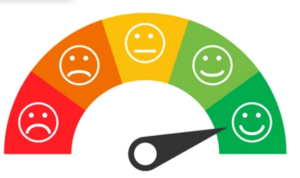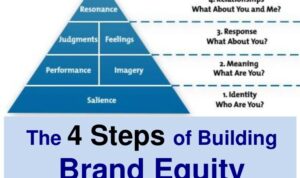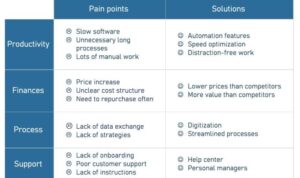Kicking off with Understanding Lifetime Customer Value, this topic delves into the importance of LCV for businesses and how it impacts marketing strategies. Get ready to uncover the secrets behind customer value!
Introduction to Lifetime Customer Value
Lifetime Customer Value (LCV) is a metric that calculates the total revenue a business can expect from a customer throughout their entire relationship. It is crucial for businesses as it helps in understanding the long-term value of each customer and guides marketing strategies for customer retention and loyalty.
Calculation of LCV and its Significance
LCV is calculated by multiplying the average purchase value by the average purchase frequency and the average customer lifespan. This gives businesses an insight into how much revenue they can generate from a single customer over time. LCV is significant in marketing strategies as it allows companies to allocate resources efficiently, personalize customer experiences, and focus on retaining high-value customers.
Difference between Customer Acquisition Cost and LCV
Customer Acquisition Cost (CAC) is the cost incurred by a business to acquire a new customer, while LCV focuses on the revenue generated from a customer over their lifetime. Understanding this difference is crucial as it helps businesses determine the return on investment for acquiring customers and retaining them for the long term.
Factors Influencing Lifetime Customer Value

Customer Lifetime Value (LCV) is influenced by various key factors that play a crucial role in determining the long-term profitability of a customer for a business. These factors include customer retention rate, average purchase value, frequency of purchases, customer satisfaction, loyalty programs, personalized experiences, customer behavior, market trends, and competition.
Customer Retention Rate
The customer retention rate refers to the percentage of customers that continue to do business with a company over a specified period. A high retention rate indicates that customers are satisfied with the products or services, leading to increased LCV.
Average Purchase Value
The average purchase value is the average amount of money a customer spends on each transaction. By increasing the average purchase value, businesses can boost LCV by maximizing revenue from each customer.
Frequency of Purchases
The frequency of purchases measures how often a customer makes a purchase. Encouraging repeat purchases through targeted marketing strategies and loyalty programs can increase LCV by increasing customer lifetime value.
Customer Satisfaction and Loyalty Programs
Customer satisfaction plays a vital role in LCV as happy customers are more likely to make repeat purchases and recommend the business to others. Loyalty programs incentivize customers to continue doing business with a company, fostering long-term relationships and increasing LCV.
Personalized Experiences, Understanding Lifetime Customer Value
Offering personalized experiences to customers can enhance their overall satisfaction and loyalty. By tailoring products, services, and marketing messages to individual preferences, businesses can increase LCV by creating a strong emotional connection with customers.
Customer Behavior and Market Trends
Understanding customer behavior and market trends is essential for businesses to adapt their strategies and offerings accordingly. By staying ahead of changing consumer preferences and industry trends, companies can maintain relevance, attract new customers, and retain existing ones, ultimately influencing LCV.
Competition
Competition in the market can also impact LCV, as businesses need to differentiate themselves and offer unique value propositions to attract and retain customers. Monitoring competitors and adjusting strategies to stand out in a crowded marketplace is crucial for maximizing LCV.
Calculating Lifetime Customer Value: Understanding Lifetime Customer Value
When it comes to calculating Lifetime Customer Value (LCV), there are various methods that businesses can use, ranging from simple to more complex formulas. The key is to accurately determine the value that each customer brings to the company over their entire relationship.
Simple Formula for LCV
To calculate LCV using a simple formula, you can use the following equation:
LTV = Average Purchase Value x Average Purchase Frequency x Customer Lifespan
– Average Purchase Value: Calculate the average amount a customer spends on each purchase.
– Average Purchase Frequency: Determine how often a customer makes a purchase in a given period.
– Customer Lifespan: Estimate the duration of the customer’s relationship with the company.
Complex Formula for LCV
For a more detailed calculation, you can consider incorporating factors such as retention rates, discount rates, and referral values into the equation. This complex formula allows for a more accurate representation of customer value over time.
Importance of Data Collection and Analysis
Accurate data collection and analysis are crucial when calculating LCV. Without reliable data, businesses may miscalculate customer value and make decisions based on inaccurate information. By collecting and analyzing data on customer behavior, purchasing patterns, and interactions with the company, organizations can obtain a clearer picture of LCV and make informed strategic decisions.
Strategies to Enhance Lifetime Customer Value

Increasing Lifetime Customer Value (LCV) is crucial for the long-term success of a business. By implementing effective strategies, such as cross-selling, upselling, and subscription models, companies can boost their profitability and customer loyalty.
Cross-Selling and Upselling
Cross-selling involves offering customers complementary products or services to their initial purchase, while upselling encourages customers to upgrade to a higher-priced option. These techniques not only increase the average transaction value but also enhance the overall customer experience.
Subscription Models
Implementing subscription models can help businesses secure recurring revenue and build a loyal customer base. By offering subscription-based services or products, companies can ensure consistent cash flow and long-term customer engagement.
Role of CRM Systems
Customer Relationship Management (CRM) systems play a crucial role in maximizing LCV by helping businesses track customer interactions, personalize marketing efforts, and anticipate customer needs. By utilizing CRM systems effectively, companies can strengthen customer relationships and drive repeat purchases.
Improving Customer Engagement and Loyalty
Enhancing customer engagement through personalized communication, loyalty programs, and exceptional customer service can significantly impact LCV. By creating meaningful connections with customers and exceeding their expectations, businesses can foster loyalty and increase lifetime value.





